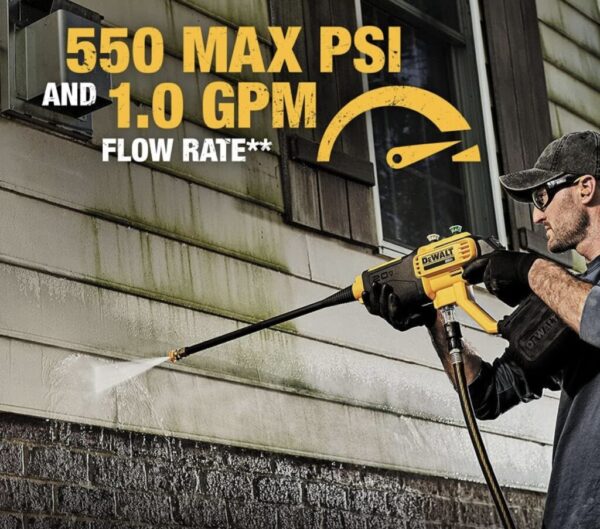
Why Soffits Get So Dirty (and Why You Should Care)
I used to completely ignore the soffits on my house—until I looked up one day and saw streaks of grime, mold spots, and cobwebs that made my place look neglected. Your soffits (the underside panels beneath your roof eaves) are one of the most overlooked parts of your home’s exterior. But they matter—a lot.
They’re designed to help ventilate your attic, prevent moisture buildup, and keep pests out. When they get dirty, mold and mildew can build up, and that’s not just gross—it can lead to long-term damage. I started noticing musty smells near the attic and even a few wasps trying to move in. That’s when I realized: it’s time to clean the soffits.
What You’ll Need Before You Start
You don’t need much to get the job done, but having the right tools makes a huge difference. Here’s exactly what I used when I cleaned mine:
- 30 SECONDS Outdoor Cleaner – This stuff is gold. It made removing algae and grime so much easier.
- Westinghouse ePX3500 Electric Pressure Washer – Lightweight, easy to move around, and strong enough to get the job done without damaging the soffits.
- A soft-bristle brush with a long handle
- Garden hose with spray nozzle (in case you’re not pressure washing)
- Gloves and safety glasses
- Ladder (or extension pole if you want to stay safely on the ground)
If you haven’t already, check out why I picked this exact pressure washer for these kinds of jobs—it’s become my go-to tool for siding, patios, and now soffits too.
How to Clean Soffits Safely Without Damaging Anything
When I cleaned my soffits the first time, I’ll admit—I almost blasted a wasp nest right into my face. Lesson learned: always do a visual check first! Look for insect nests, loose panels, or any signs of damage before grabbing your tools.
Here’s the simple method I now follow that’s effective and safe:
- Wet down the area – Use your hose or low-pressure spray from your washer to gently rinse the soffits. Don’t go full blast. You’re just loosening the dirt and dust first.
- Apply the cleaner – I used the 30 SECONDS Outdoor Cleaner 🧼. You can attach it to your garden hose and spray it directly on the soffits. Let it sit for 5–10 minutes to break down mildew, spider webs, and grime.
- Scrub if needed – For tough spots, use a long-handled soft-bristle brush. Be gentle. The panels aren’t designed for pressure.
- Rinse thoroughly – Rinse everything clean. If you’re using the Westinghouse pressure washer, keep the nozzle on a wide spray setting and stand a few feet back.
Doing this once or twice a year makes a huge difference. And if you notice your siding needs some love too, I’ve also got tips on how to clean algae off vinyl siding the easy way.

Can You Use a Pressure Washer on Soffits?
Yes—but with caution. I’ve seen people use too much pressure and blow their soffit panels loose or spray water directly into attic vents, which can lead to mold problems up top. The key is using the right kind of washer and settings.
That’s why I swear by the Westinghouse ePX3500. It’s powerful enough to clean off gunk but won’t blast a hole through your siding. I always stick with the 25° nozzle and keep it several feet away from the surface, working in smooth horizontal strokes.
And if you’re still nervous about using a pressure washer up high, consider using an extension wand or just stick with a hose, cleaner, and scrub brush combo. It takes longer but still gets the job done.

How Often Should You Clean Your Soffits?
In my experience, once or twice a year is the sweet spot for cleaning soffits—once in early spring to clear out winter buildup, and again in the fall to knock off cobwebs and mold before colder months roll in. That routine has kept my house looking fresh and mold-free, especially in the humid Midwest.
If you live in a damp climate or under a lot of tree cover, you might need to clean them more often. A quick visual check during yard work is usually all it takes to know if they need attention. And if you’re already doing other outdoor maintenance—like fixing a leaning fence or sprucing up your siding—just add soffits to the list.

Can Dirty Soffits Cause Bigger Problems?
Absolutely—this isn’t just a cosmetic issue. Dirty soffits can lead to mold, pest problems, and even ventilation issues in your attic. When debris and grime block those little vents, your attic can trap moisture. That trapped moisture? It’s like sending an open invite to mold.
One summer, I ignored a few dark streaks on the underside of my soffits. By fall, I had a mildew problem inside my attic insulation—and let me tell you, that cleanup was no fun. Since then, I’ve kept things clean with a regular rinse and my go-to cleaner, the 30 SECONDS Outdoor Cleaner.
If you notice stains coming back quickly after cleaning, it may also be worth checking your gutters. We have a full breakdown of how to fix low water pressure too, since clogged gutters can indirectly mess with your home’s water flow and drainage setup. Everything’s connected!

What’s the Best Cleaner for Soffits?
After trying a few different sprays, the one I keep coming back to is the 30 SECONDS Outdoor Cleaner. It’s tough on mold, mildew, and algae—which is exactly what soffits collect—but gentle enough not to damage vinyl or aluminum surfaces.
I usually attach it right to the garden hose and spray it on. Within a minute, you’ll see the green and black gunk start to disappear. It’s one of those products that actually lives up to the hype. If you’ve already used it to clean algae off your vinyl siding, you’ll know it works just as well under your eaves too.
And if you’re looking for something with more muscle, I’ve been using the Westinghouse ePX3500 Pressure Washer on tougher jobs. With the right nozzle, it’s safe for soffits and gets the job done fast.

Do I Need a Ladder or a Long Wand Attachment?
That depends on how high your soffits are and what tools you have. I’ve got a single-story ranch-style home, so my 6-foot ladder and a hose sprayer usually do the trick. But if you’re in a two-story home or just prefer to stay on the ground, I highly recommend getting a wand extension—especially if you’re using a pressure washer like the Westinghouse ePX3500.
A wand lets you get under the soffits at the right angle without overspraying into the vents or damaging the siding. Plus, it’s safer. I’ve had a few too many close calls on ladders to know that keeping your feet on the ground is worth the investment in the right attachment.
This same setup also works great when you’re doing tasks like cleaning your gutters or blasting away dirt from porch overhangs and decorative trim.

How to Keep Your Soffits Cleaner, Longer
Once your soffits are sparkling again, you’ll want to make that clean look last. Here’s what I do to reduce how often I have to go through this process:
- Trim back trees and shrubs – Branches that hover too close to your roofline create shade and trap moisture. That combo encourages algae and mildew to build up.
- Clean your gutters regularly – Clogged gutters can lead to overflowing water, and that excess moisture runs down the fascia and soffits. I make it a habit to clean them every couple of months or after a big storm.
- Install soffit vent covers – These help reduce debris like leaves and bugs from getting trapped in the vents, which can contribute to discoloration and buildup.
If you’re already tackling gutter cleaning, this is a great time to revisit my post on how to clean soffits and gutters together. Doing both at once saves time and prevents double work later.

When Should You Call a Pro Instead?
Most homeowners can handle cleaning soffits on their own—especially with a good pressure washer and a safe ladder. But there are a few cases where it makes more sense to bring in help:
- Your home is more than two stories and you don’t have the proper safety gear
- There’s visible damage like sagging panels, cracked vents, or signs of pests
- You have mold that keeps coming back no matter how often you clean
In these cases, hiring someone who knows what they’re doing can actually save you money long term. If moisture is sneaking in and rotting your fascia or attic insulation, a quick fix today prevents expensive repairs tomorrow.
That’s why I’m also a fan of preventive tools like the 30 SECONDS Outdoor Cleaner—used once or twice a year, it keeps these problems from ever starting.

Other Spots to Clean While You’re at It
Once I’ve got the pressure washer out and the outdoor cleaner mixed up, I like to knock out a few more dirty jobs around the house. You’d be surprised how much grime collects in just a few months. Here’s where I hit next:
- Vinyl siding – If you haven’t already, check out how to clean algae off vinyl siding the easy way. That green gunk builds up fast and makes your house look older than it is.
- Deck or patio – I give the concrete or wood a quick blast with the washer. You’ll be amazed at the color hiding under that dirt.
- Outdoor furniture – Plastic and metal chairs clean up fast with just a rinse and a bit of cleaner.
I think of it like this: if I’m already geared up and a little wet, I may as well get more done. Plus, everything ends up looking sharp and fresh for the season.

Keep Up, Don’t Catch Up
The biggest lesson I’ve learned as a homeowner is that a little maintenance goes a long way. When I stay on top of cleaning things like soffits, gutters, siding, and more—it saves me from bigger repairs down the road.
A solid pressure washer like the Westinghouse ePX3500 and a no-fuss cleaner like 30 SECONDS Outdoor Cleanermake those tasks easy.
And when you’re ready to tackle algae, mildew, water pressure issues, or even fixing a leaning fence without replacing it, just poke around the blog—DIY Home Wizard has got you covered.

As an Amazon Associate we earn from qualifying purchases through some links in our articles.



